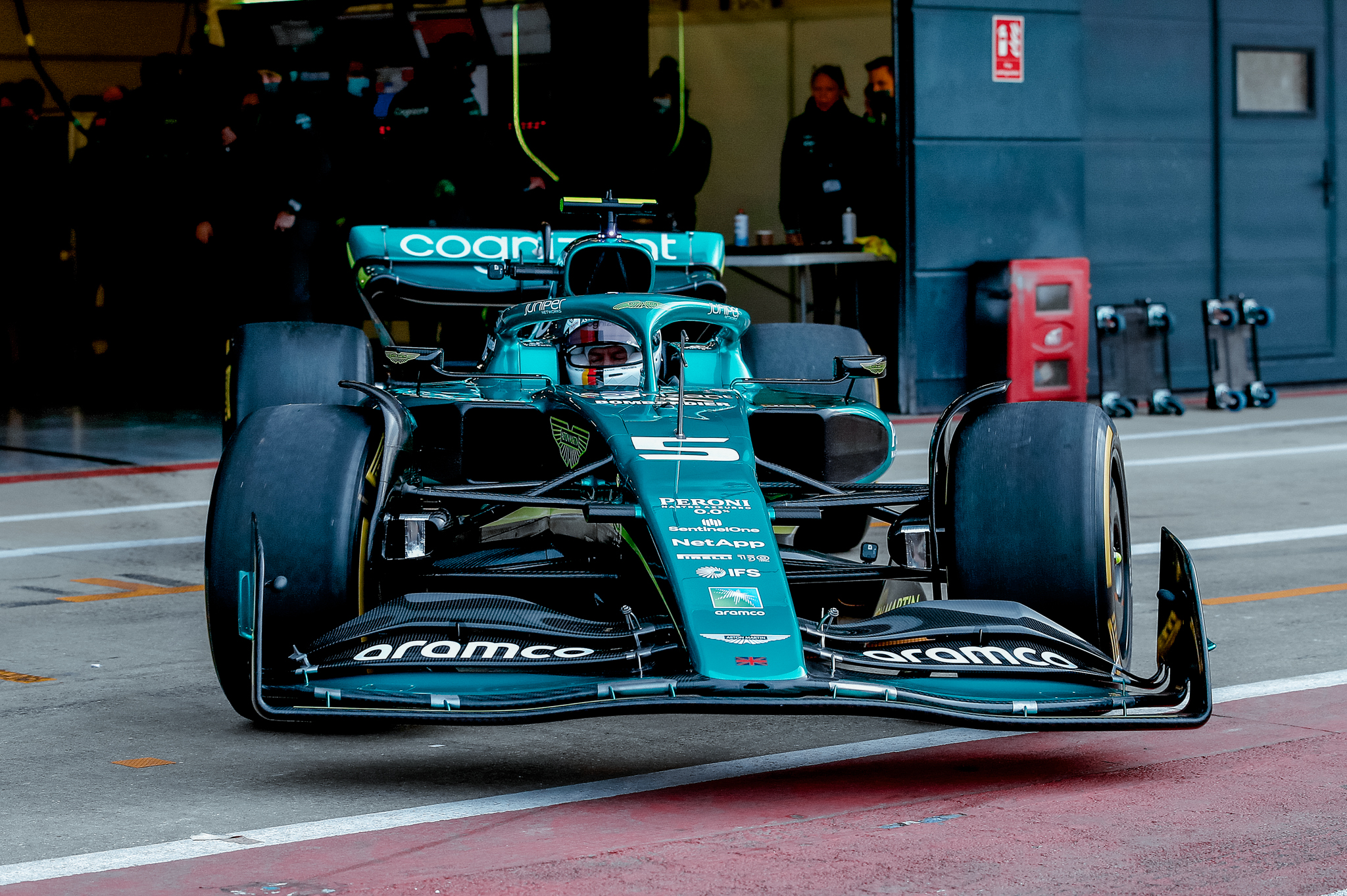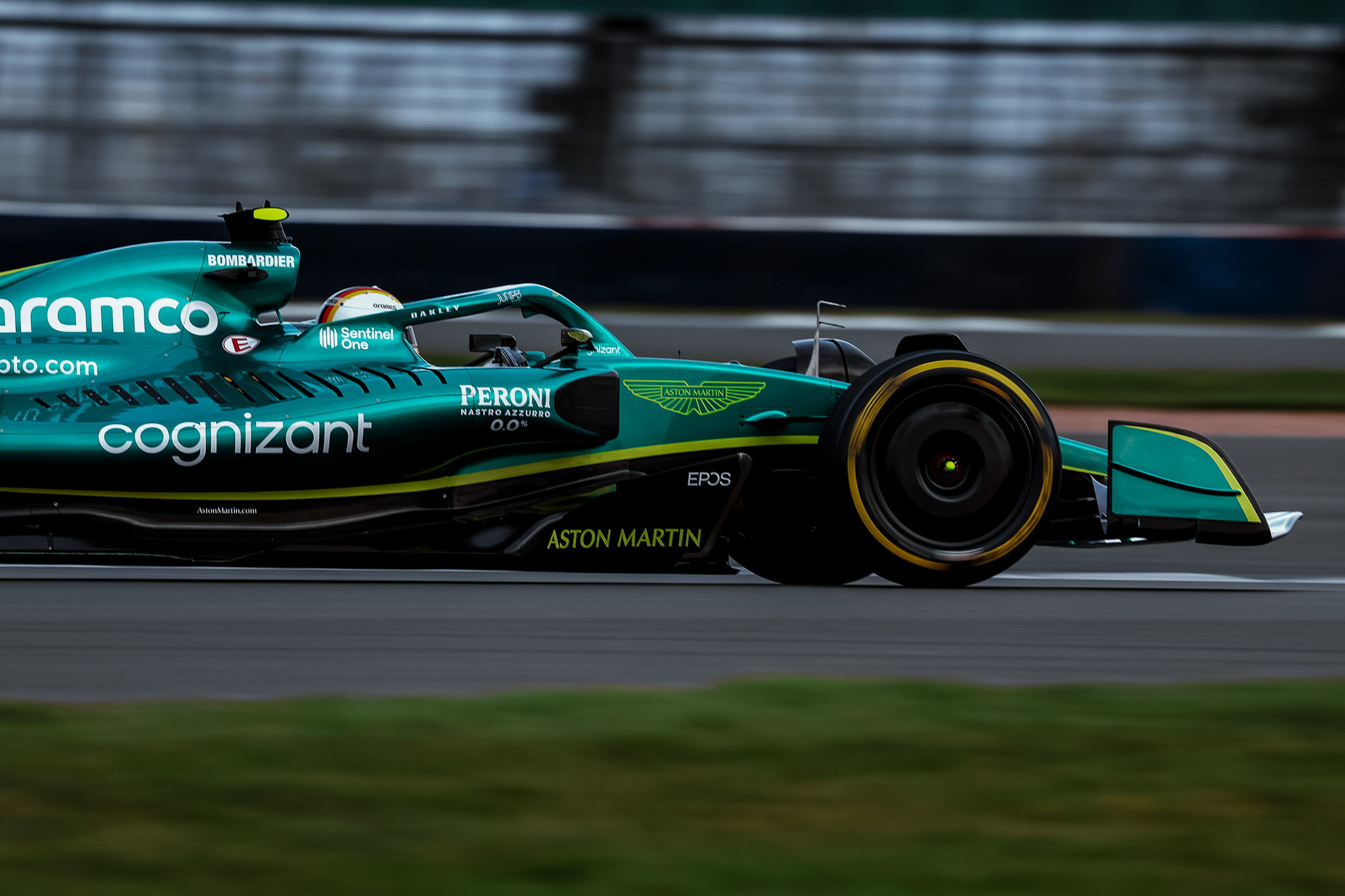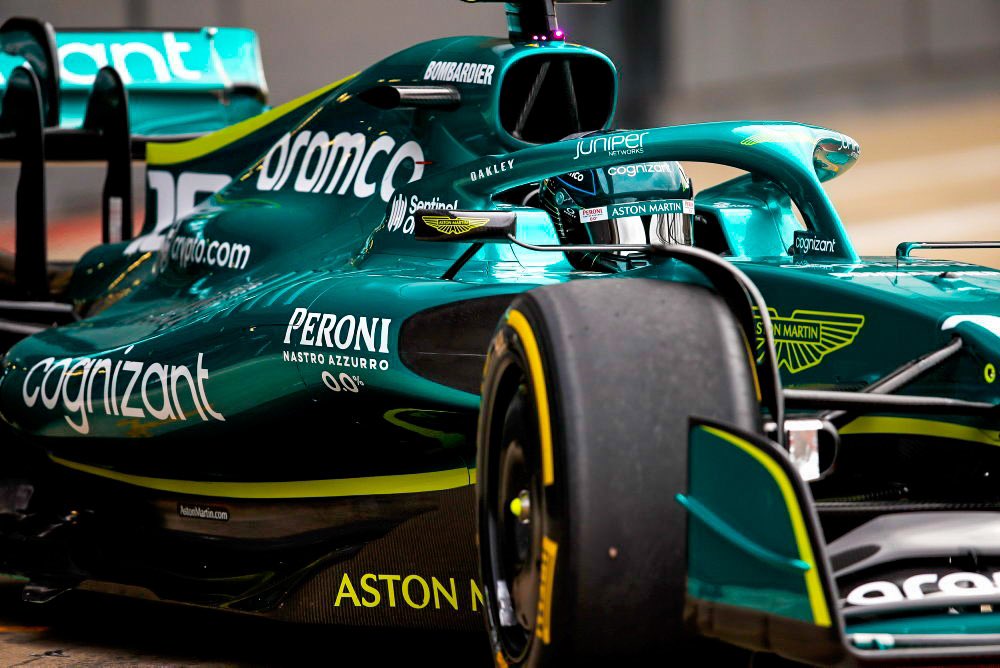Ex-Mercedes AeroDynamicist's take on the AMR22 features. Theres whole lot more to read if you don't fancy the video, below is just the first part. Interesting in-depth read.
https://www.motorsportmagazine.com/arti ... its-hiding

There is plenty to look at, so we’ll start at the front wing, where the first element is disconnected from the nose, similarly to Haas. It links to the nose in a very different way though, blending in at a much flatter angle and higher above the ground.
This is mainly driven by a very different front wing loading philosophy, offloading the centre and generating the majority of downforce elsewhere by loading the mid and outboard portions of the wing.
It allows the team to raise the centre of the wing well clear of the minimum legal ground clearance, which should get some lovely clean mass flow onto the T-tray/bib, that hangs underneath the cockpit, just ahead of the floor. This will maximise suction on the bib, and ensure good airflow towards the inlets of the floor channels.
The compromise is that they have to heavily load the further outboard portions of the wing to get back the load that they aren’t getting from the centre, running them to the maximum legal width barring the very outboard tip. The downside to this is lots of upward airflow to the outside of the tyre, which usually performs better with less of this upwash.
The nose follows the contour of the second element such that the trailing edge of the second element lines up with the underside of the nose. This will produce a very nice and clean surface underneath, and effectively mimics the element carrying cleanly the whole way across. It also means we don’t need to put any notches and sharp curvature in the front wing like the Haas to support flow around the nose.

Looking at a legality box overlay from the top, which outlines the maximum allowable dimensions of the section, you can see that Aston is using essentially all the available space.
The first two elements of the wing are the largest, with much shorter rear elements particularly in the outboard section. Some of this may be structural, as the second element is likely to be carrying the majority of the load, but they could have found that this arrangement promotes higher quality airflow to the rear as well.

The Aston has significantly larger brake ducts than the Haas. It’s difficult to tell without seeing the brake duct exit, but they could be bypassing some air through and out the back to control the tyre wake in some manner.

The downwash and outwash created by the last two elements in the corner of the wing is quite significant. Haas is doing a similar thing, and teams were doing this heavily in previous years too.
There’s a notable divot near the flap adjuster where the wing moves away from the edges of the legality box. Some of this is probably to offload the inboard portion of the wing, but I would imagine they are also spooling up some decent sheet vorticity here, which rolls up into a swirling vortex and can be used for flow management further downstream.
The flap adjustment pivot also has a very aggressive delta-shaped vortex shedding edge, which could be an ambitious interpretation of the rules. This would work well to generate discrete vortices for airflow management, and it seems like this is an area where teams are trying to do that.











